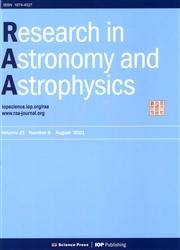将经验小波变换与卷积 LSTM 神经网络相结合,提高极地运动预测的准确性
IF 2.8
4区 物理与天体物理
Q3 ASTRONOMY & ASTROPHYSICS
引用次数: 0
摘要
高精度极地运动预测对深空探测和卫星导航具有重要意义。极地运动受多种激励因素影响,非线性预测方法更适合极地运动预测。为了探索深度学习在极地运动预测中的效果。本文提出了一种基于经验小波变换(EWT)、卷积神经网络(CNN)和长短期记忆(LSTM)的组合模型。通过对 EOP 20C04 数据的训练和预测,验证了该算法的有效性,并探讨了深度学习中两种预测策略在极地运动预测中的性能。结果表明,在 15 天以内的短期预报中,递归多步预报的性能优于直接多步预报,而直接多步预报更适合中长期预报。在 365 天的预报中,EWT-CNN-LSTM 在 X 方向和 Y 方向的平均绝对误差分别为 18.25 mas 和 15.78 mas,分别比 Bulletin A 的精度高 23.5%和 16.2%。本文章由计算机程序翻译,如有差异,请以英文原文为准。
Leveraging the Empirical Wavelet Transform in Combination with Convolutional LSTM Neural Networks to Enhance the Accuracy of Polar Motion Prediction
High-precision polar motion prediction is of great significance for deep space exploration and satellite navigation. Polar motion is affected by a variety of excitation factors, and nonlinear prediction methods are more suitable for polar motion prediction. In order to explore the effect of deep learning in polar motion prediction. This paper proposes a combined model based on empirical wavelet transform (EWT), Convolutional Neural Networks (CNN) and Long Short Term Memory (LSTM). By training and forecasting EOP 20C04 data, the effectiveness of the algorithm is verified, and the performance of two forecasting strategies in deep learning for polar motion prediction is explored. The results indicate that recursive multi-step prediction performs better than direct multi-step prediction for short-term forecasts within 15 days, while direct multi-step prediction is more suitable for medium and long-term forecasts. In the 365 days forecast, the mean absolute error of EWT-CNN-LSTM in the X direction and Y direction is 18.25 mas and 15.78 mas, respectively, which is 23.5% and 16.2% higher than the accuracy of Bulletin A. The results show that the algorithm has a good effect in medium and long term polar motion prediction.
求助全文
通过发布文献求助,成功后即可免费获取论文全文。
去求助
来源期刊

Research in Astronomy and Astrophysics
地学天文-天文与天体物理
CiteScore
3.20
自引率
16.70%
发文量
2599
审稿时长
6.0 months
期刊介绍:
Research in Astronomy and Astrophysics (RAA) is an international journal publishing original research papers and reviews across all branches of astronomy and astrophysics, with a particular interest in the following topics:
-large-scale structure of universe formation and evolution of galaxies-
high-energy and cataclysmic processes in astrophysics-
formation and evolution of stars-
astrogeodynamics-
solar magnetic activity and heliogeospace environments-
dynamics of celestial bodies in the solar system and artificial bodies-
space observation and exploration-
new astronomical techniques and methods
 求助内容:
求助内容: 应助结果提醒方式:
应助结果提醒方式:


